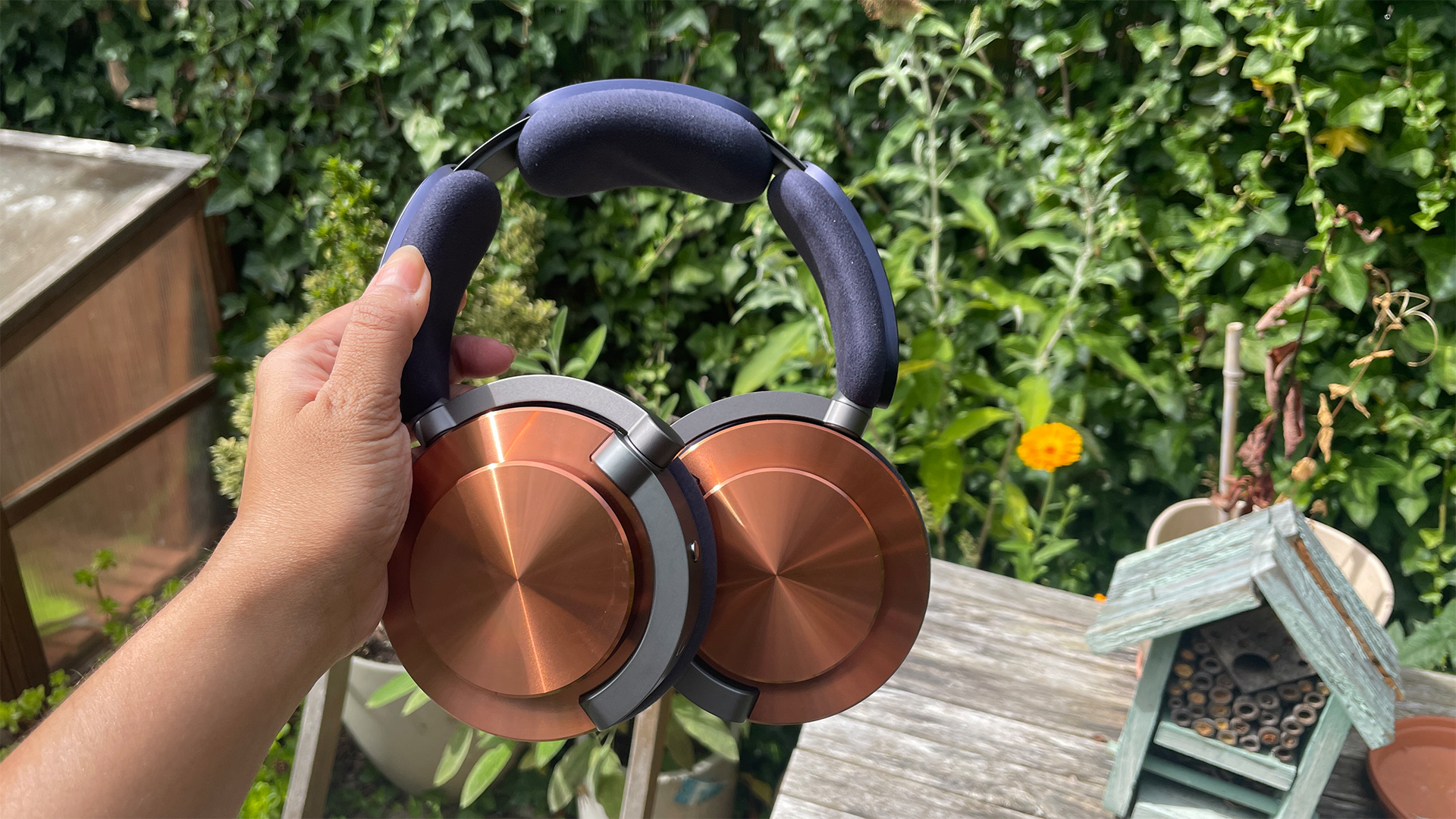What Hi-Fi? Verdict
A strong effort from Dyson with a solid foundation, but there’s room for improvement if it wants to beat the class leaders at this premium price
Pros
- +
Clear, detailed, with even balance
- +
Mature, neutral tone
- +
Customisable design is interactive and fun
- +
Comfortable
- +
Effective ANC
- +
Outstanding battery life
Cons
- -
Sound lacks dynamic punch and subtlety
- -
Could do with better timing and more enthusiasm
- -
Oversized ear cushions get too hot
- -
Usability isn’t flawless
- -
Some premium features missing
Why you can trust What Hi-Fi?
The wireless headphones market is so competitive that, to stand out, you really need to offer something unique. Dyson – yes, that Dyson – has decided it has the answer. The Dyson OnTrac is a bold new pair of premium wireless headphones that offers an outstanding battery life and colourful customisation options that we’ve never seen before. It’s an exciting proposition…
Price
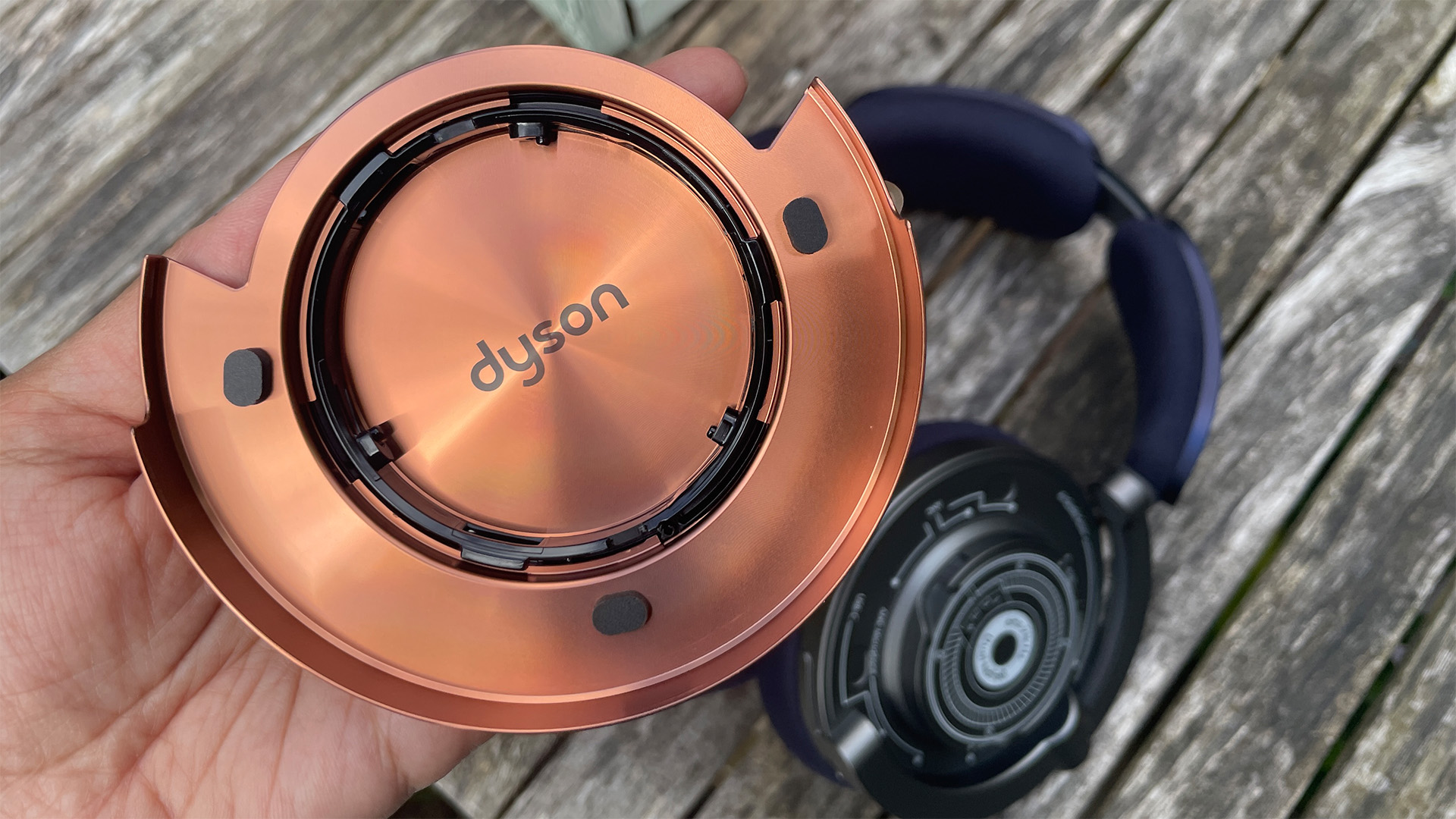
Dyson’s positioning of the OnTrac over-ear headphones at the premium end of the market is a clear sign of its ambitions. Costing £450 / $500 / AU$799, the OnTrac faces formidable competition from the likes of the Apple AirPods Max (originally launching at £549 / $549 / AU$899 and now regularly seen for £499) and the Bose QuietComfort Ultra Headphones (£450 / $429 / AU$649, down to £379). Both models have remained five-star powerhouses ever since their respective launches, and it will take some doing to match and beat their impressive levels of sound quality, noise-cancelling, design and features.
Most recently, the Sonos Ace headphones launched at a similar price of £449 / $449 / AU$699, and it found out the hard way just how high the standards are and how fierce the competition is at this premium price range.
Design & customisation
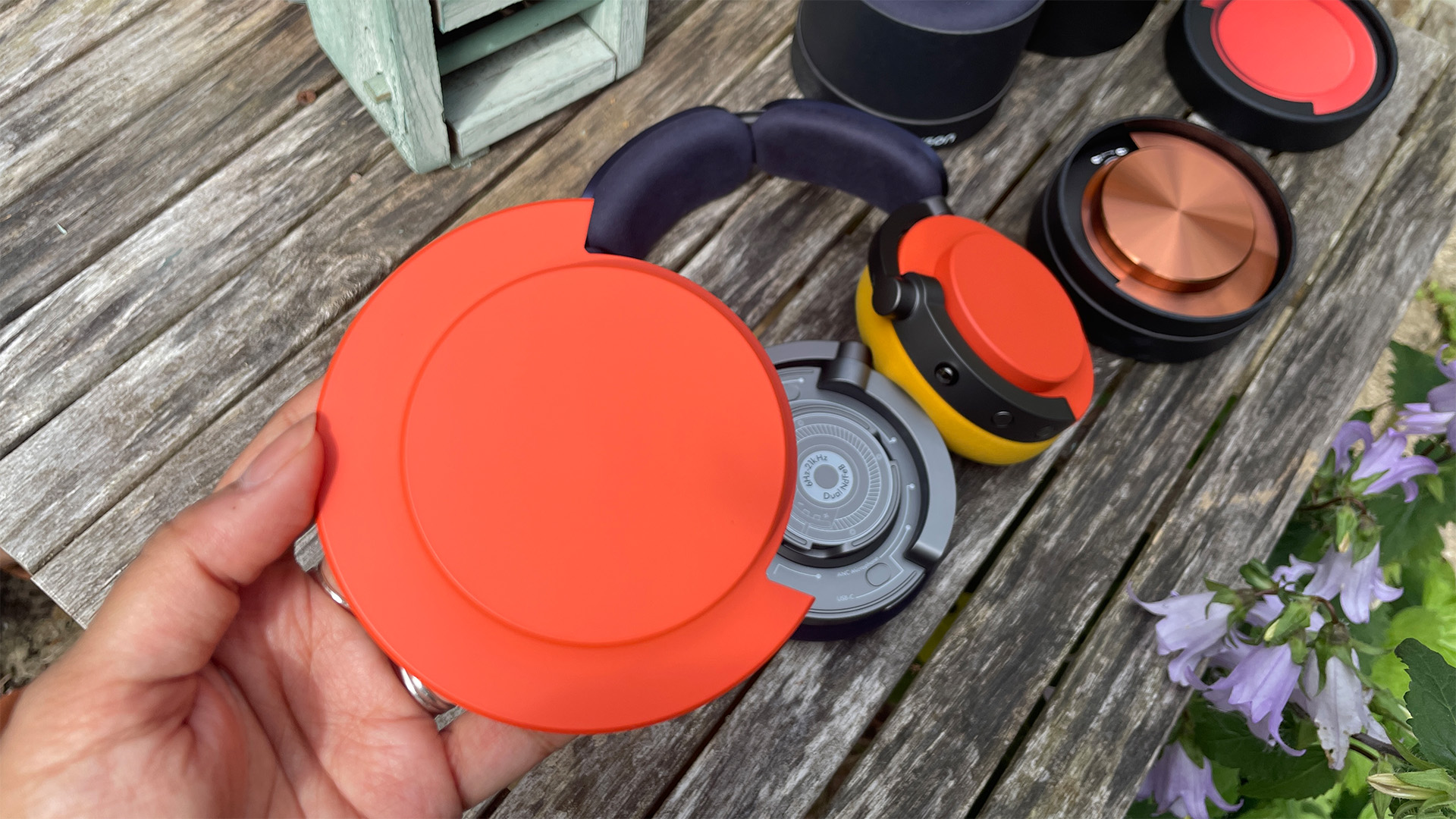
Let’s tackle the most obvious and eye-catching aspect of the Dyson OnTrac first, before we get into the finer details. The design of these OnTrac headphones is bold and loud even before we get to the various customisations on offer, which include being able to swap out the outer ear caps and ear cushions for different colours.
The OnTrac come in four main body finishes: CNC black nickel, CNC aluminium, CNC copper and ceramic cinnabar. Our review sample is the copper model – dark blue headband and ear cushions with shiny copper outer ear caps. Dyson also provided us with an extra set of ceramic cinnabar (a matte red-orange) outer ear caps and a pair of chrome yellow ear cushions to try out.
Dyson has opted for a simple twist-and-lock method of attaching the caps and cushions, rather than, say, magnetic attachment. Each outer cap is machined intricately and feels well built. The twist-and-lock method is easy to get to grips with and the caps fit on securely. We love seeing the structure of the headphones themselves exposed when the caps and cushions are removed. The blueprint design – showing where the mics and buttons are – and seeing the drivers revealed is both appealing and informative.
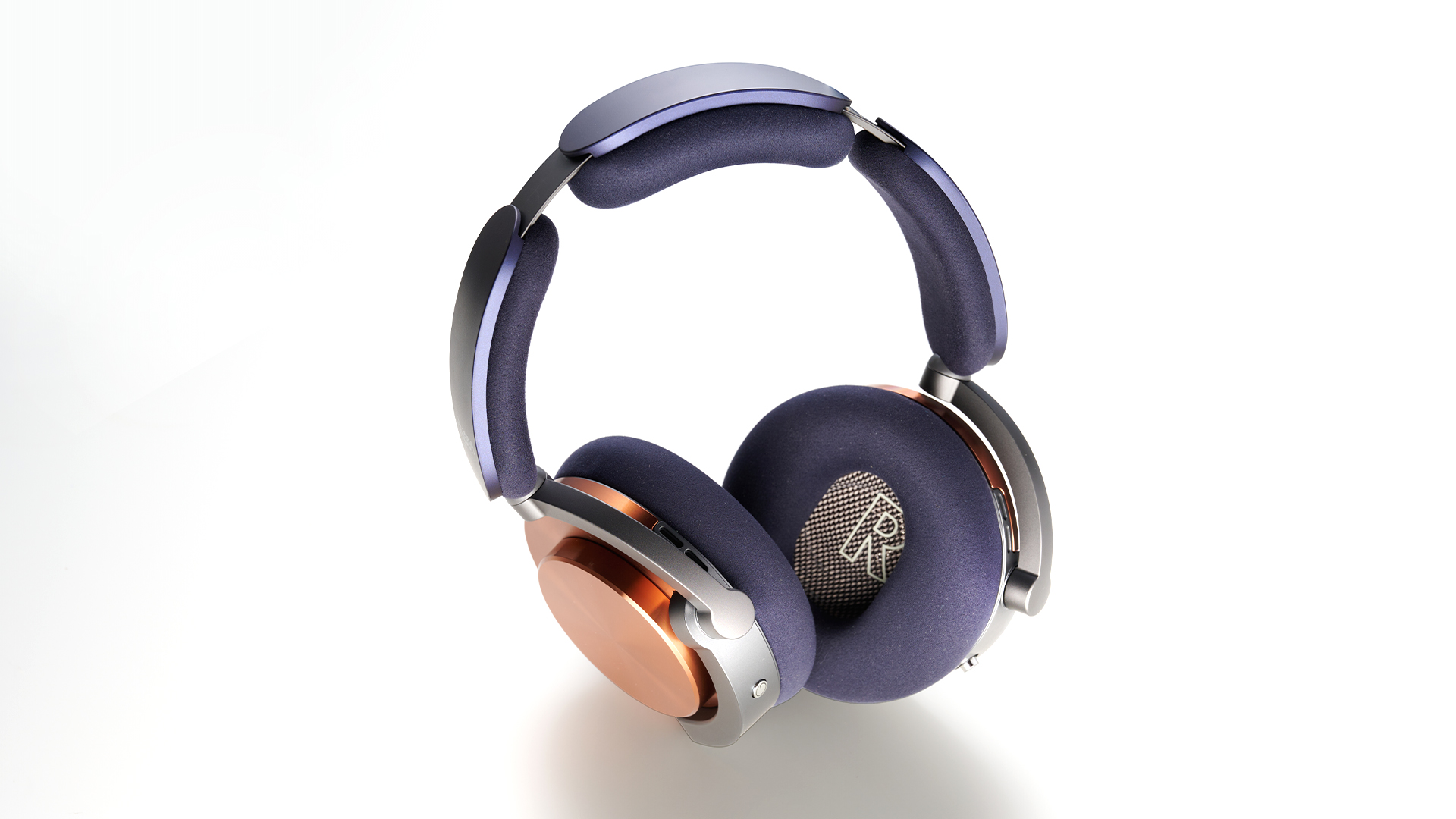
Bluetooth 5.0
Codec support SBC, AAC, LHDC
Battery life 55 hours (with ANC on)
Active noise-cancelling? Yes
Transparency Mode? Yes
Charging USB-C
Finishes x 4 (CNC black nickel, ceramic cinnabar, CNC aluminium, CNC copper), various outer ear cap and ear cushion colours available
Weight 451g
You can change the entire feel of the headphones depending on the colours you choose. Our standard blue/copper finish looked rather smart and didn’t stand out as much as when we switched to the more cartoonish, Fisher-Price look of the cinnabar/yellow combination.
The latest hi-fi, home cinema and tech news, reviews, buying advice and deals, direct to your inbox.
There is scope to customise the Dysons to look as sleek or as garish as you want. You get seven choices each for the outer caps and the ear cushions, including a subtle khaki green and very bright sky blue. Swapping out the caps yourselves is also just a lot of fun: it’s a level of interaction and personalisation you don’t get with headphones, bar replacing old ear cushions, and brings out the Meccano-loving child in you.
The one caveat? The extra caps and cushions are pricey, at £50 / $50 per pair. We wish Dyson would include an extra pair or at least give a discount when buying the OnTrac headphones, but £50 / $50 per colour is quite a lot, on top of that premium price tag. You’ll have to have fairly deep pockets if you want a selection of colours to play with. We imagine most people will simply buy one additional pair for the novelty factor.
Build & comfort
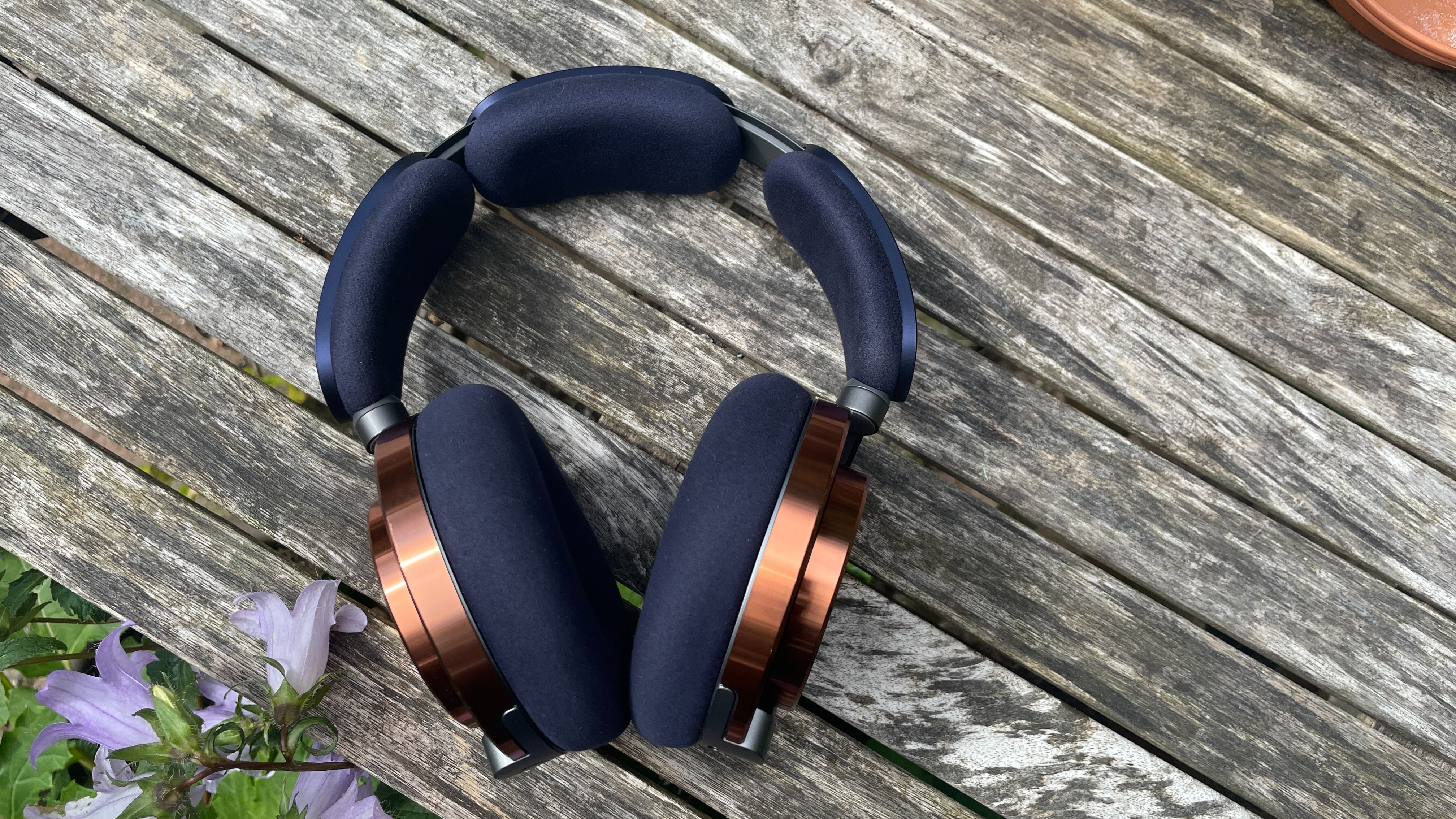
The customisable, swappable aspect means that the Dyson OnTrac do have a mechanical look compared with more seamless luxury designs. The build quality is sturdy. The over-ears have a robust structure with neatly machined hinges and a cushioned headband, with ample adjustment to fit the various head sizes within our review team. There are two battery packs on either side of the headband to offer an even weight distribution across the band, and this is managed well, with no undue pressure on any part of our heads. The clamping pressure is nicely judged; the cans feel secure and stay put, even when we are on the move.
The ear cushions are larger and plusher than most models, too. The aim was to deliver a good standard of passive noise isolation even with active noise cancelling (ANC) off, says Dyson, while also delivering long-lasting comfort. And despite their large size, these headphones are very comfortable – the ear pads are roomy and cushion our heads with velvety comfort.
The downside, however, is that our ears get warm fairly quickly thanks to those oversized cushions and the microfibre material. Nice as they are, we think they need to be a more breathable fabric. We tested these Dyson over-ears during the height of summer and it didn’t take long for our ears to get sweaty when walking, but they heated up even when sitting still at our desks in a cool room.
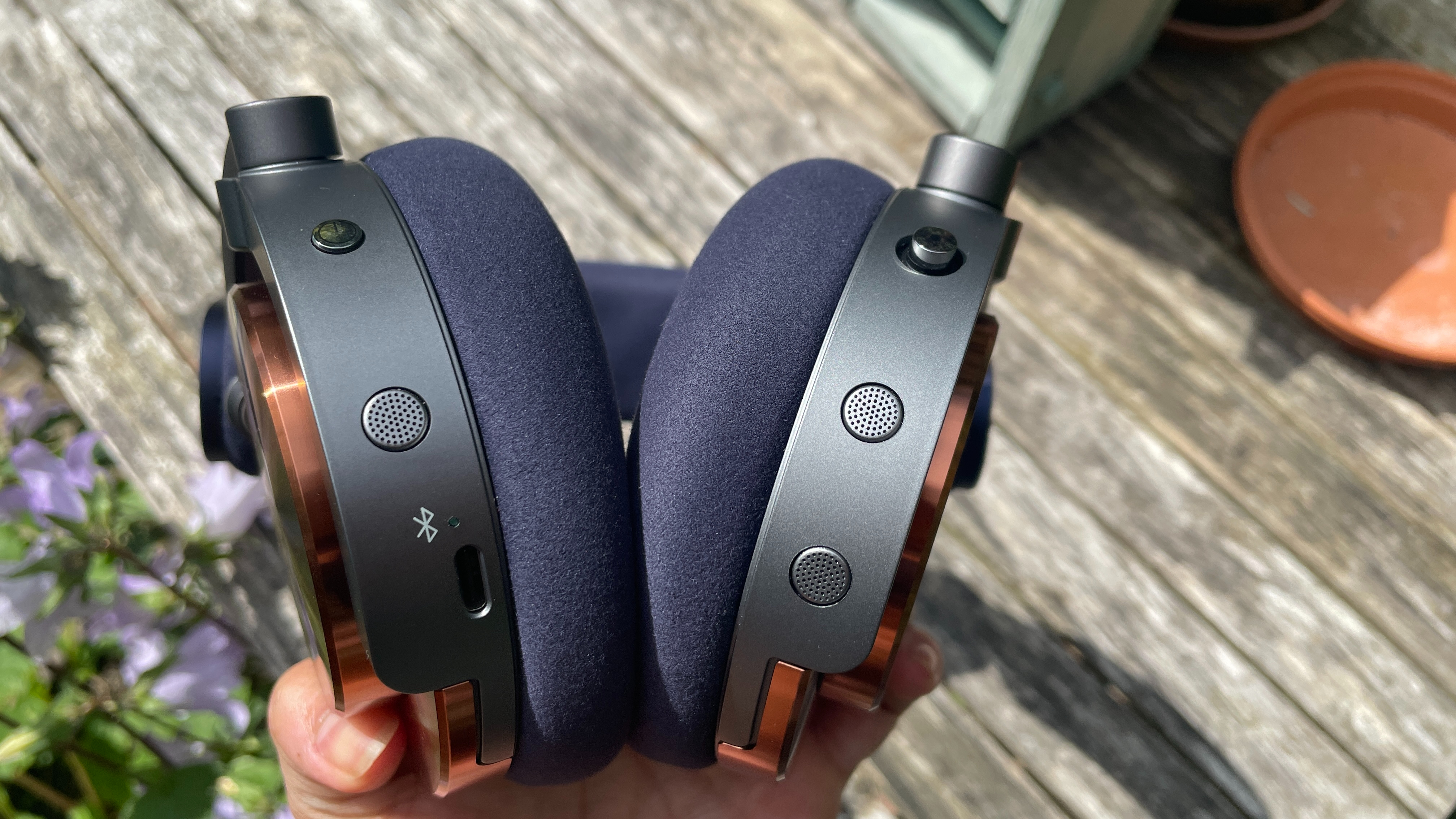
In comparison, the AirPods Max ooze luxury and offer a firm clamping pressure (albeit a bit too much at times, especially if you wear glasses), and the Bose are a better-balanced and more practical portable design. Neither heats up our ears as much as the Dyson does in such a short time, and they still manage to deliver effective ANC. The Bose also fold up, whereas the Apple and Dyson models only fold down flat.
There’s no getting around the fact you will always be aware that you are wearing a pair of rather chunky headphones with the Dysons. Weighing 451g, the OnTrac are considerably heavier than the AirPods Max (385g) while the Bose QC Ultra Headphones are positively featherlight at 250g. For headphones designed for portable use rather than home use, we find the OnTrac are simply too bulky compared with their peers. It’s a puzzling design decision when nearly every other headphone brand has recognised the need to go more svelte and lightweight. The Bose can be easily slung around your neck, but the OnTrac’s large, round earcups can be cumbersome, to the point that our chin gets engulfed in the big cushions when resting around our neck. Perhaps a bit of everyday practicality has been compromised in search of ultimate noise reduction.
We like that Dyson has offered a combination of physical buttons and gesture controls, and these are simple enough to use. There’s one button for power and Bluetooth pairing, and the other is a multi-function joystick for playback and volume control. The joystick button is a great idea, but we find it’s just a little too small and can be fiddly to use. Moving the button left or right to skip tracks and pushing it to play/pause songs (and summon voice assistants) works fine, but pushing it up or down to change volume is less successful. The movement just isn’t as responsive or as precise as we’d like at this level.
You can double-tap on the earcups to swap between full ANC and Transparency mode – but bear in mind you’ll need to fire up the MyDyson app to turn ANC off entirely. It’s a good shortcut when travelling between noisy and quiet environments, but you really need to tap hard twice to make the action stick. You’ll hear a “whoomp” sound when it swaps over, but we wish this action was a bit more sensitive.
Features
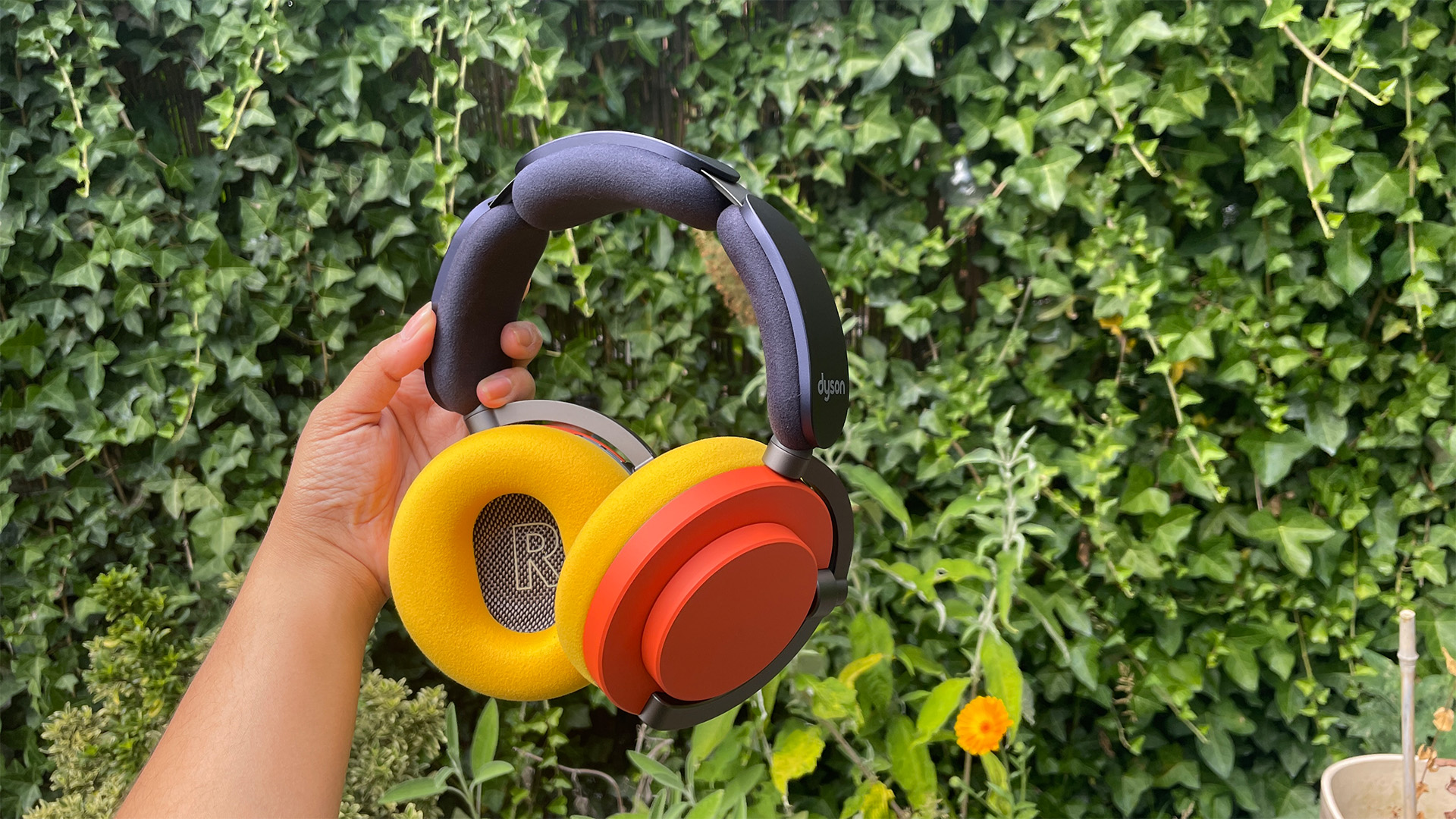
The other (and arguably more useful) outstanding feature of the Dyson OnTrac is their whopping great battery life of 55 hours, with ANC turned on. That’s a huge amount of playtime, and we’ve barely made a dent in our week of testing. With moderate use – a mix of music, podcasts and voice calls every day – we still have 70 per cent of battery life left. For frequent flyers who can’t do without a pair of headphones to accompany them for a 24-hour trip (and back), these Dysons will certainly last the full journey. They leave the competition in the dust: Bose offers 24 hours, Apple a mere 20 hours, while Sonos Ace and Sony WH-100XM5 manage 30 hours.
You get a 1.2m braided USB-C cable in the box, and a 10-minute charge will give you 2.5 hours of juice. This cable is just for charging, not for wired listening; you’ll need to buy a separate adapter to use these cans wired. A collapsible carry case is also provided, giving decent protection against the elements.
The OnTrac have a head-detect feature that automatically pauses music when you take the headphones off and resumes playing when put back on. This works brilliantly, every time. The Dysons also automatically turn off after 30 minutes of inactivity to save their already considerable battery.
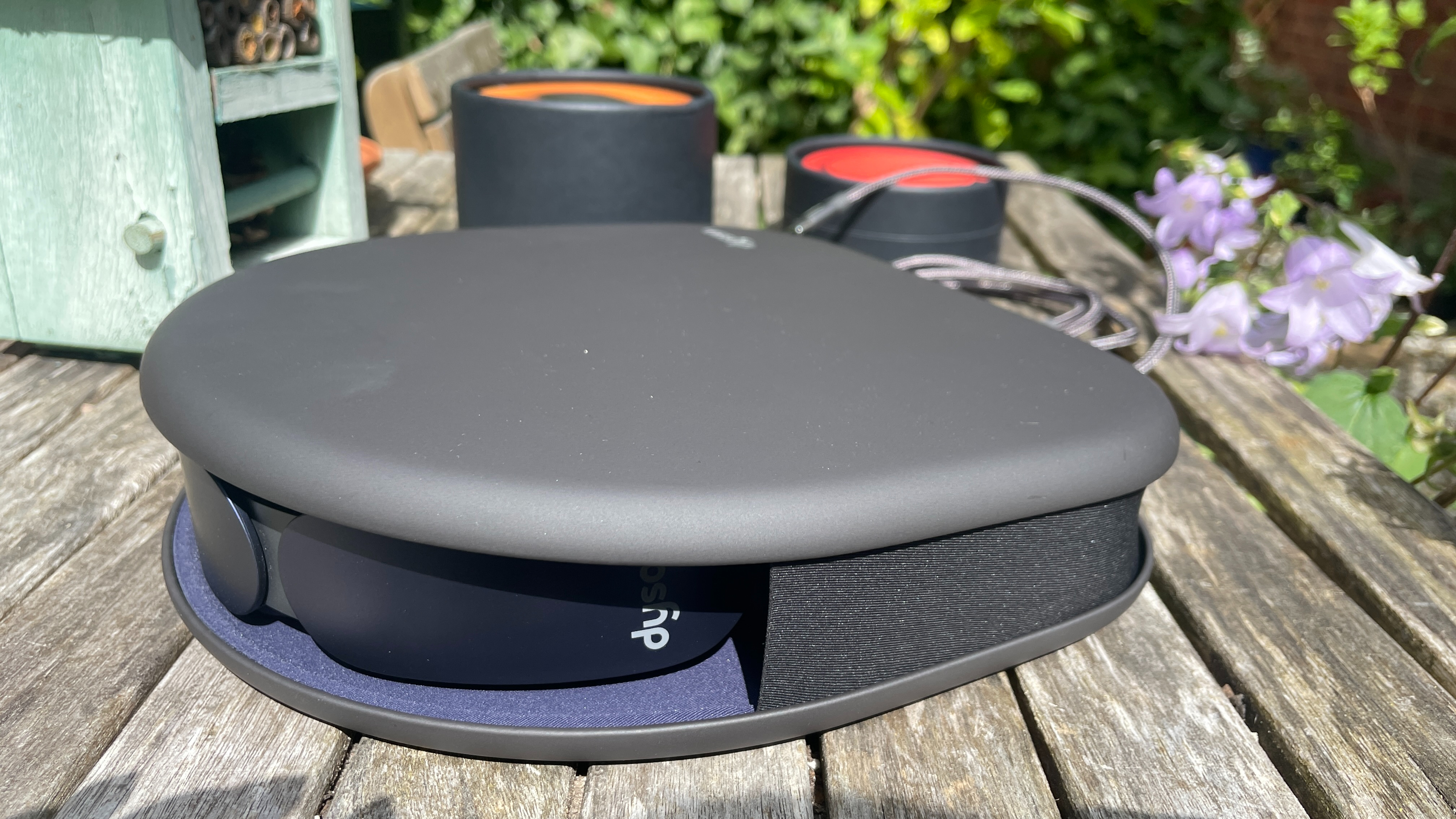
As far as extra features go, the Dyson OnTrac are a bit light on that front, and they feel as though they’re lagging a bit behind the times compared with fresh rivals. These headphones run on the older Bluetooth 5.0 – which is perfectly fine for a stable connection, but it does mean that certain features we’ve come to expect from premium wireless headphones are missing. The most glaring omission is Bluetooth multi-point, which offers seamless switching between two devices – a feature we constantly use during daily video meetings and music listening sessions. It may sound like a first-world problem, but having to manually re-connect the Dysons when switching from your phone to your laptop and back again feels like a backward step. Conversely, the Bose QC Ultra Headphones (Bluetooth 5.3) make this process so easy, and while the four-years-old AirPods Max also run on 5.0, they have the benefit of the H1 chip that makes connecting to iOS devices slick and seamless in comparison.
In terms of audio codecs, the basic SBC and AAC codecs are supported, as is the lesser-known 24-bit LHDC codec. There’s also no spatial audio support, although we don’t really miss it here, but it’s one to keep in mind if you’re a fan of the immersive format. You can’t customise the on-ear controls, nor are there any adjustments for the noise-cancelling or transparency modes.
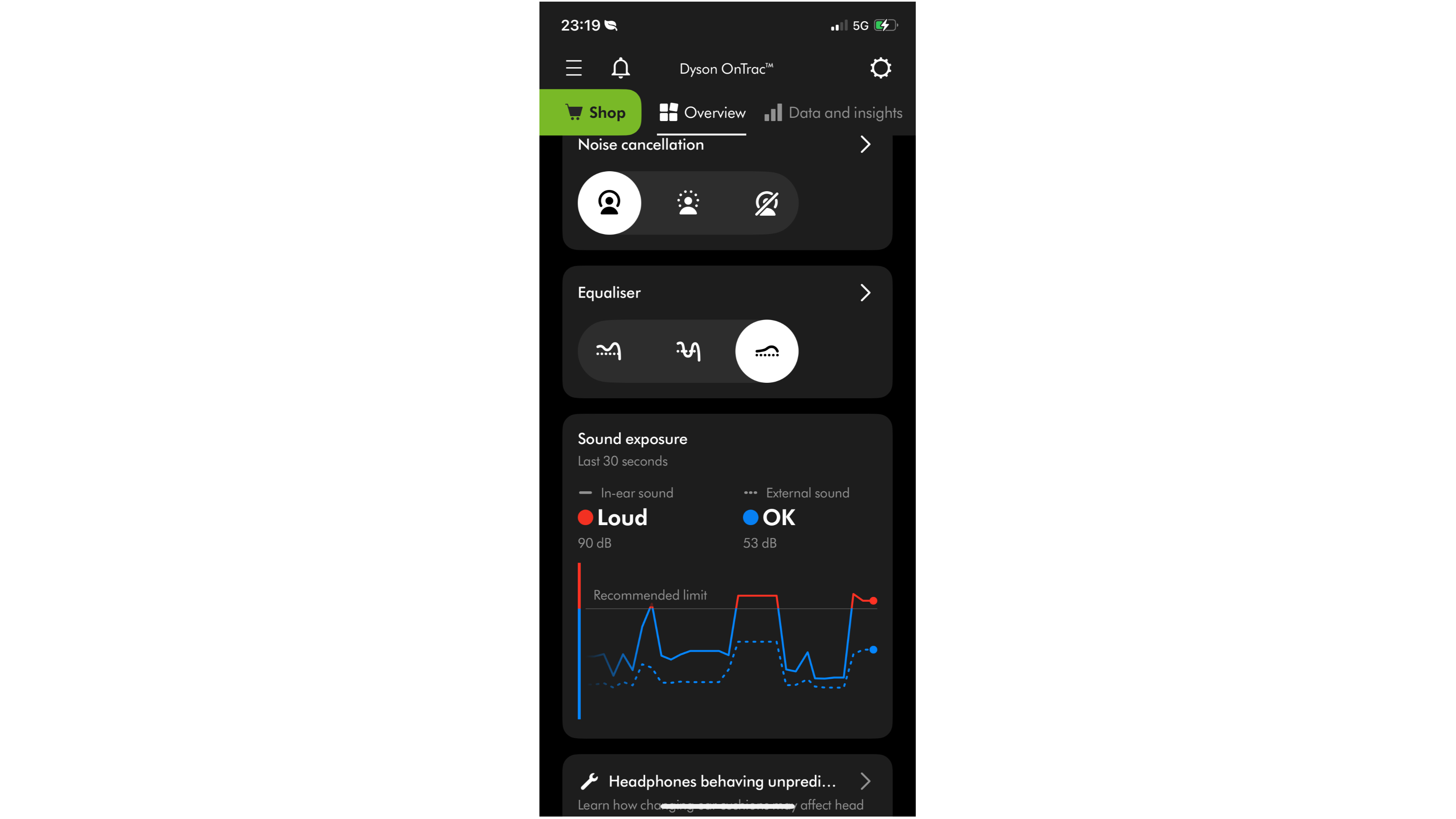
You do, however, get three EQ presets: Neutral, Enhanced, Bass Boost. We found that Neutral sounded the most balanced and even, Enhanced gave an energetic lift that was appealing, while Bass Boost is too boomy and unbalanced.
One clever feature you do get in the MyDyson app is the real-time “sound exposure” graph. This monitors the amount of in-ear and external noise you’re hearing when wearing the OnTrac, and displays any sudden or harmful peaks in sound levels. It’s an interesting bit of information you don’t get with any other headphone brand, and it can be fascinating to monitor over a long period of time. In fact, the only time the graph went over the recommended limit was when we had to tap hard to get the ANC gesture control working on the ear cups…
ANC & call quality
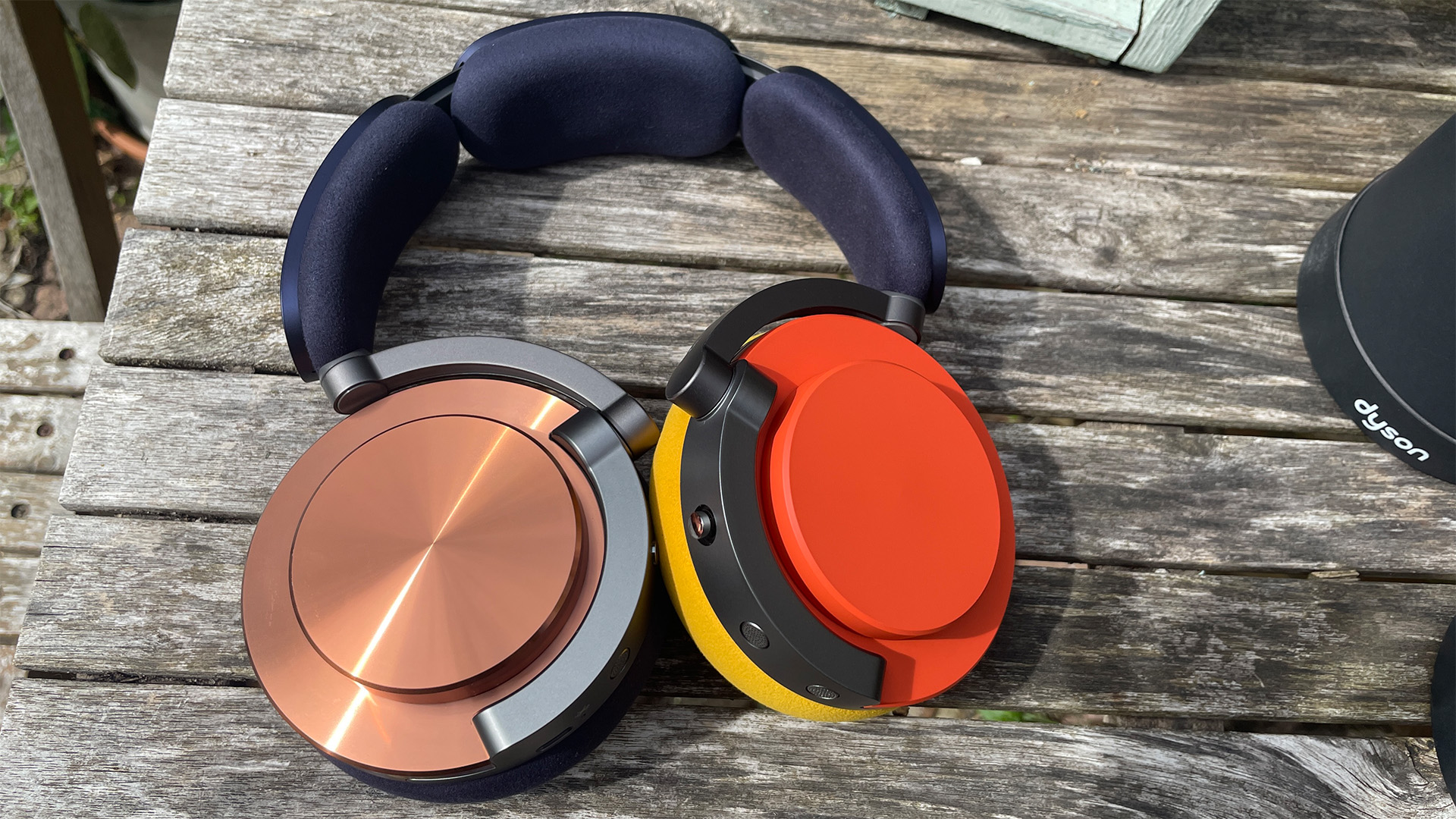
If the lack of any exciting features has dulled the lustre of these Dyson headphones, their active noise-cancelling (ANC) talents should draw you back in. Dyson has made big claims about its noise-cancelling abilities: eight mics that monitor noise 384,000 times a second, reducing up to 40dB of unwanted noise combined with the massive cushions’ passive noise isolation. It’s clear they are gunning for Bose’s crown here, and it’s an area in which the OnTrac perform impressively well.
General environmental noise is dimmed down effectively when the full “isolation” ANC mode is turned on. Engine rumbles are smoothed out, passing traffic is a mere murmur and they do a fair job of dealing with sudden noises. You’re wrapped in a comfortable cocoon, leaving you with just your music (or your thoughts).
Is it better than the Bose at noise-cancelling? We went back and forth dozens of times and it was hard to be definitive. We think they’re pretty much on par – which is an impressive feat for the Dyson first-timer. If we were to split hairs, we think the Bose QC Ultra Headphones are a little better at smoothing out those lower frequencies of engine rumbles, but there’s no doubt the Dysons are just as effective. We haven’t taken these cans on a flight yet, but we’ll put their ANC – and long battery life – to the test as soon as the next opportunity arises.
Transparency mode works well, too, allowing you to clearly hear train announcements and traffic noise and order a coffee (in the absence of a conversation mode/speak-to-chat feature). Dyson has done a great job of keeping artificial noise at a minimum, as well as not having that ‘vacuum-like’ feeling when ANC is turned on.
Call quality is decent too. Voices are clear, detailed and are projected well, from both sides of a phone call. They do pick up a bit of swirling wind noise, but it didn’t impede conversations. The Bose QC Ultra Headphones make voices sound a bit more solid and rounded, but the Dysons sounded clearer and crisper.
Sound
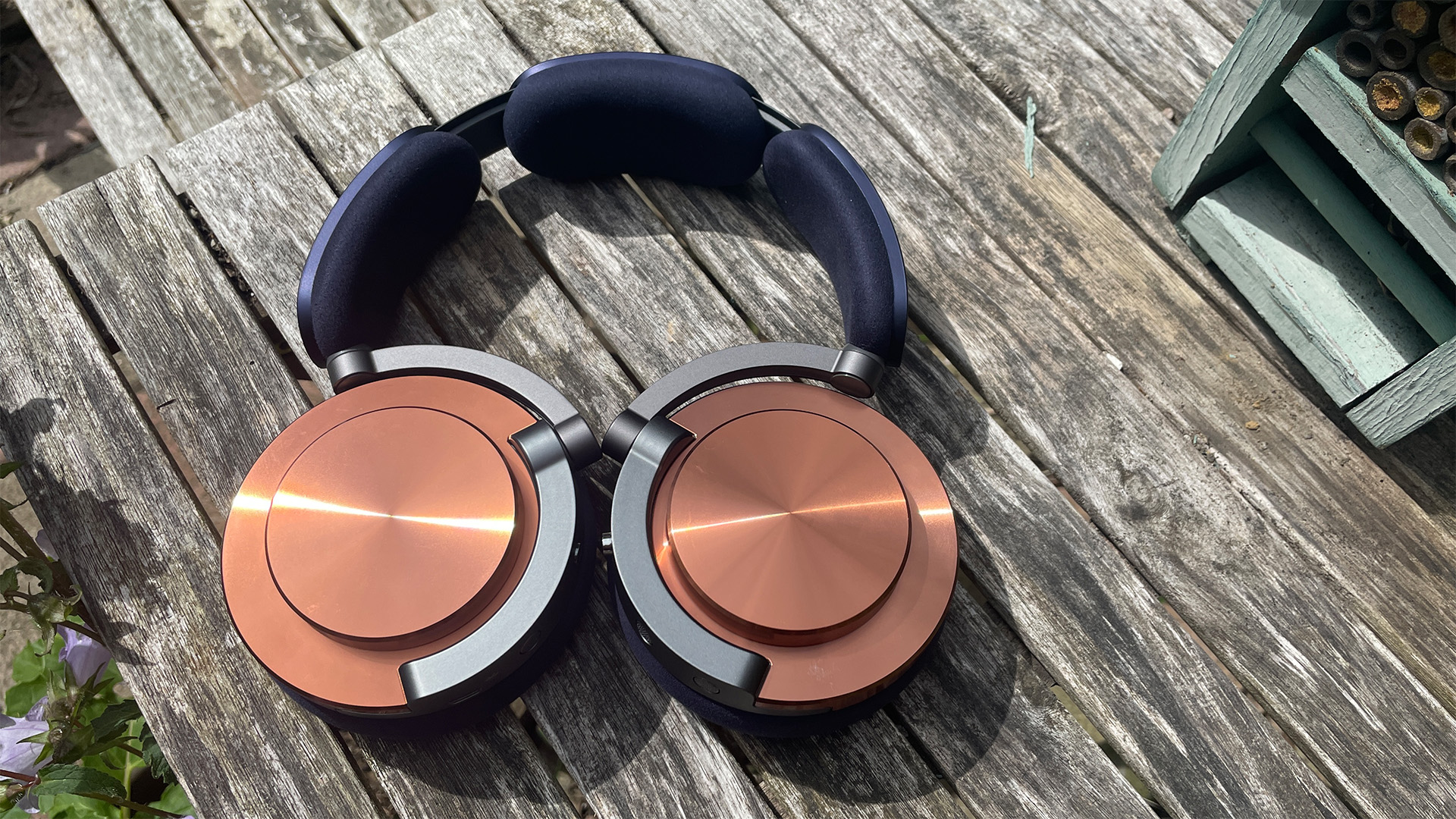
If you’re expecting the Dyson OnTrac to sound as bold and loud as they look, you’re in for a surprise. They sound clear and clean, with a neatly organised and evenly balanced presentation. It’s an easy-going and surprisingly restrained sound, with a flat balance that gently settles us into the music.
There’s a good amount of detail, with voices in particular delivered in a pleasing manner. Waxahatchee’s beautifully undulating vocals on Right Back To It, Taylor Swift’s conversational delivery on no body, no crime and Eric Bibb’s lush tones on Booker’s Guitar are all projected clearly and smoothly. The Dysons have custom-built 40mm neodymium drivers, with the speaker housing tilted at an angle of 13 degrees towards the ear.
The initial splashy high-frequencies of Philip Bailey’s Easy Lover are controlled and not too bright, while there’s a decent helping of bass in Massive Attack’s Angel. They’re fairly taut, but we find that the AirPods Max offer more power and muscularity at the bottom end, which delivers more satisfying impact and more rhythmically driven basslines in comparison to the OnTrac.
The Dyson headphones in general could do with a greater degree of solidity throughout. While it’s a pleasant listen with no undue flabbiness or sharp edges, we find its sensible, flat balance robs the headphones of a bit of fun and personality. The ferocious nature of Slipknot’s Duality is easy to follow, for instance, but we’d like the Dysons to let their hair down a bit more. The ‘Enhanced’ EQ mode injects a bit of zest to the music, but we find that the OnTrac are lacking in dynamic punch and subtlety overall. The heart-tugging strings on John Williams’ Schindler’s List need to have a greater sense of ebb and flow to fully convey those strong emotions, as well as offer greater textural depth to the instruments. Similarly, the piano notes on Clair de Lune and Erik Satie’s Gnossienne No. 1 may sound delicate and fluid, but the rival AirPods Max and Bose QC Ultra Headphones offer a greater sense of authority; there’s more detail, agility and solidity as the piano keys are struck. You get a better sense of flow and intent of the track, and the surrounding harmonies and decay of notes are revealed with greater detail and nuance through the AirPods Max.
This affects not just engagement but the overall timing of the Dyson headphones. The sense of tension and drama in Game Of Thrones’ Light Of The Seven isn’t communicated as distinctly, while the repeated, rolling rhythm loses momentum in Billie Eilish’s Blue. It should be punctual and hold your attention throughout, but comes through a little leaden and safe through the Dysons. The Bose’s greater sense of control, agility and energy make them a more fun, engaging listen, while the AirPods Max – despite being an older model – still takes the lead with a more transparent, nuanced performance that gets to the heart of a song more accurately.
That Dyson has taken such an even approach for the OnTrac is admirable. The overall tone is easy to listen to, but at this premium level, the competition is high and the standards are even higher.
Verdict
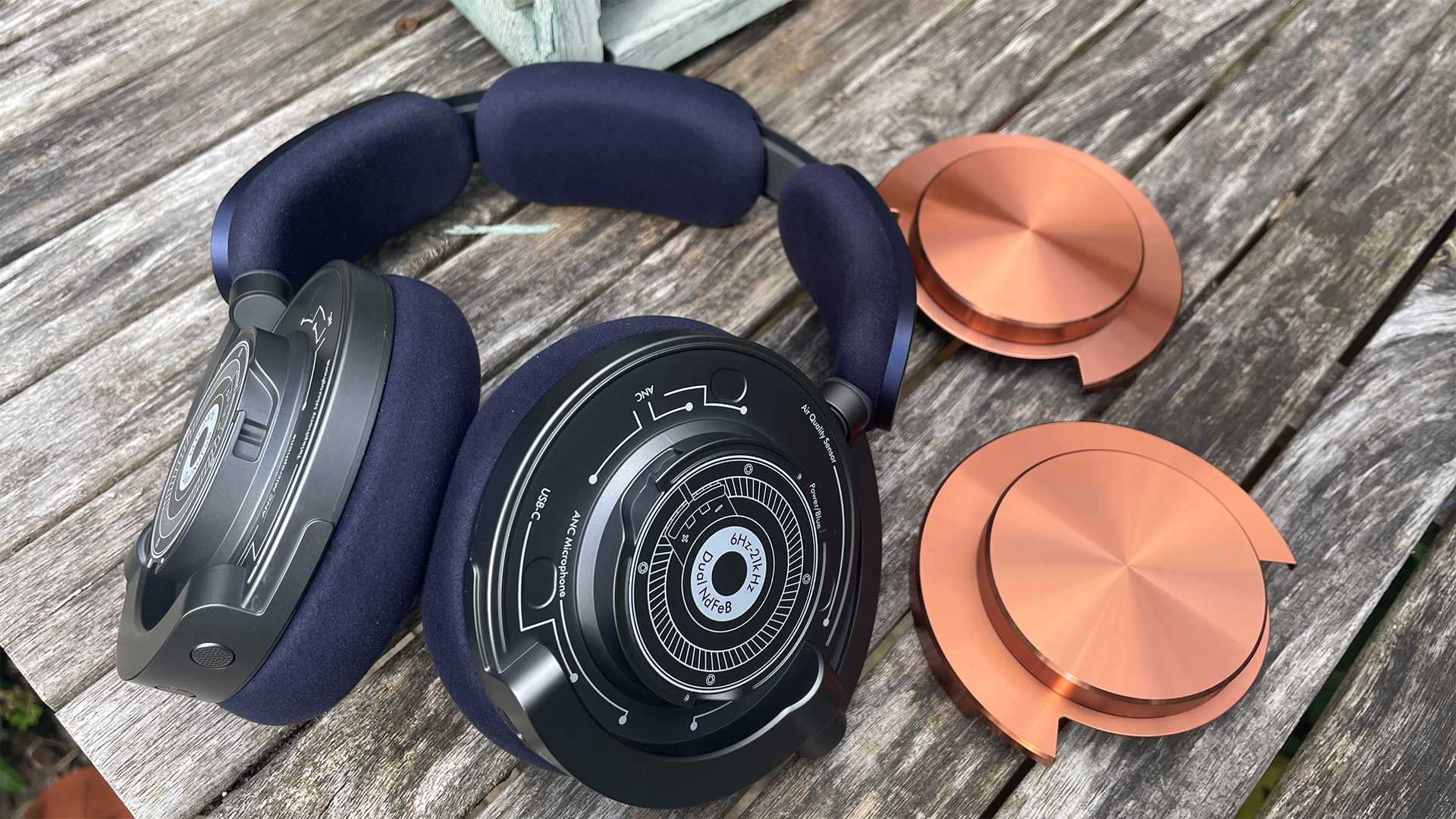
Dyson’s first wireless headphones are an interesting pair. There’s plenty to like here – outstanding battery life, great ANC, the hard-to-ignore design and unique customisation. But with such a premium price tag attached to the OnTrac, it means that every aspect of their usability, feature set, design and sound will come under careful scrutiny, especially when going up against more seasoned rivals in the astonishingly good Apple and Bose models.
At this premium price, the concerns we have with the general usability and somewhat lacking features add up, and coupled with a sound quality that’s nicely even and easy-going but not subtle, dynamic or precise enough to worry the competition, it means the OnTrac have a bit more growing up to do before we can wholly recommend them.
The Dyson OnTrac are a great first draft; if they employ the lessons learnt from this solid effort, we have no doubt the 'mark two' version of these headphones will be even better.
SCORES
- Sound 3
- Build 4
- Features 3
MORE:
Read our review of the Apple AirPods Max
Also consider the Bose QuietComfort Ultra Headphones
Read our Sony WH-1000XM5 review
Best wireless headphones tried and tested by our experts
What Hi-Fi?, founded in 1976, is the world's leading independent guide to buying and owning hi-fi and home entertainment products. Our comprehensive tests help you buy the very best for your money, with our advice sections giving you step-by-step information on how to get even more from your music and movies. Everything is tested by our dedicated team of in-house reviewers in our custom-built test rooms in London, Reading and Bath. Our coveted five-star rating and Awards are recognised all over the world as the ultimate seal of approval, so you can buy with absolute confidence.
